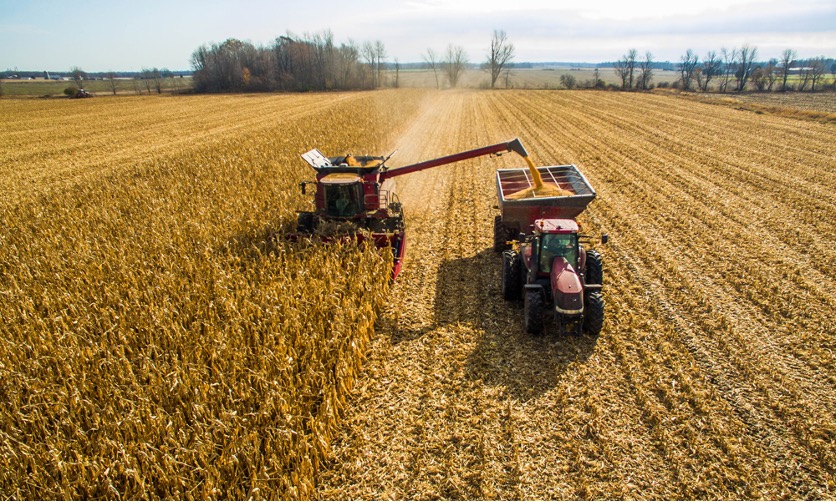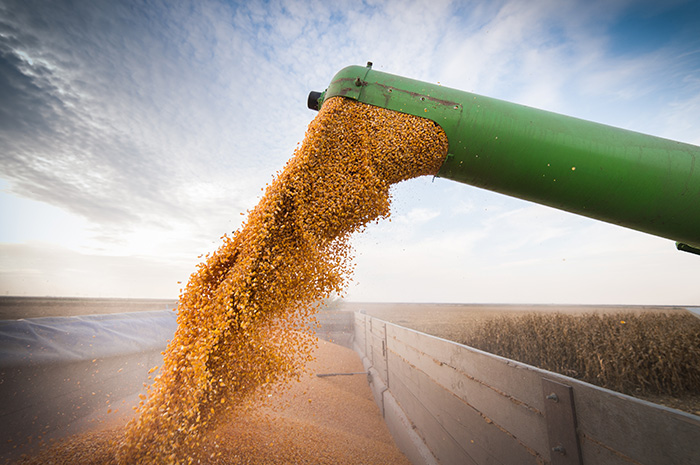Minnesota farmers really wanted a summer with drier fields for once. But the intensifying drought and record-shattering temperatures that came with the 2021 growing season were not exactly what producers had in mind. Now that the harvest is coming to an end with some much-needed late summer rain, the 2021 growing season ends on a note that is distinctly Minnesotan.
You know: Not too bad; could be worse.
Let's take a look at what happened, and where we go from here.
How did the 2021 drought affect Minnesota farmers?
According to the Minnesota Department of Natural Resources, the summer of 2021 ushered in an expansion of already drier-than-normal conditions. The growing season's below-normal rainfall and hotter temperatures resulted in the worst drought in 10-30 years for much of the state.
As of Oct. 7, Northern Minnesota was in a state of severe to extreme drought while pockets of southern and far western Minnesota have no drought conditions, according to the Minnesota Drought Monitor. Late-season rainfalls have helped much of the state recover, upgrading from "moderate drought" to "abnormally dry."
The drought of 2021 brought back still-vivid memories of the 1988 drought. Farmers saw a 30-40% drop in yields that growing season, according to another DNR report. While that outcome likely repeated itself in many fields across the state, late-season rainfalls helped others recover.
As we look at statewide corn yields, it’s important to acknowledge that the drought will affect each operation differently. It all depends on how many rainclouds rumbled over your fields, your soil composition (sandy vs. water-retaining clay), and the drought hardiness of your corn seed.
What are the yields for Minnesota corn?
Minnesota is the fourth-largest corn producer in the U.S. Naturally, as we hope to enter recovery from the summer of drought, yields will be top of mind. When you look at the state as a whole, it’s pretty darn impressive, considering the drought.
The USDA Crop Production report shows decent crop yields as of Oct. 12, despite the drought. Let’s compare the two years:
Minnesota corn yields in 2021 (forecasted)
- 1.39 billion bushels
- 178 bushels per acre
Minnesota corn yields in 2020
- 1.43 billion acres (7% higher than 2021)
- 191 bushes per acre (about 4% higher)
What are the yields of Minnesota soybeans?
Minnesota is the third largest soybean producer in the U.S., so exceptionally dry conditions carried major concerns. However, the two-plus inches of rain that covered much of the state (with the exception of northern Minnesota) in August were almost perfectly timed, giving the emerging pods that blast of end-of-season moisture they so need. Some growers are reporting 70 bushels per acre.
Minnesota soybean yields in 2021 (forecasted)
- 3.73 million bushels
- 49 bushels per acre
Minnesota soybean yields in 2020
- 3.69 million bushels
- 50 bushels per acre
How were Minnesota soybean and corn crops in 2021?
While these early reports of statewide yields are encouraging, many farmers are planning next steps after a disappointing season. To get more of the story, here’s the latest from the Minnesota Crop Progress & Condition report from the U.S. Department of Agriculture. As of Oct. 10:
Topsoil conditions
As we can see, late-season rains greatly improved soil conditions for the majority of Minnesota growers.
- 25% very short to short
- 70% adequate
- 5% surplus
Minnesota corn crop conditions
As of Oct. 10, 36% of corn was harvested for grain, and a majority are reporting disappointing crop conditions.
- 24% poor to very poor
- 36% fair
- 40% good to excellent
Minnesota Soybean crop conditions
Conditions are as of Oct. 10.
- 26% poor to very poor
- 38% fair
- 36% good to excellent
Adjusting the plan when things don't go to plan
The good news is, field crops are less susceptible to drought than specialty crops. However, when the conditions change, that can mean using more inputs than you planned, whether it meant replanting, applying more insecticide or implementing irrigation. To help you recover crop inputs, things like crop insurance, assistance programs and interest-free emergency loans are tools that can help you fill the gaps.
Looking ahead to the 2021-22 growing season, there is still plenty of uncertainty. Fertilizer prices continue their wild swings, and higher-than-expected corn and bean supplies could result in a lower-than-desired commodity process. Once the harvest is in, it will be a good opportunity to schedule a few days in the office to take a fresh look at your plans for the coming year. Only you can really render a verdict on the growing season: Was it profitable when all is said and done?
Expertise you can trust
At Minnwest Bank, our agri-business bankers have gained the trust of growers across Minnesota. That’s because they’re also farmers and producers who live and work in their community, so they understand the challenges and what’s at stake.
Get expertise you can trust to help your farm thrive. Make an appointment with a Minnwest ag banker today!


